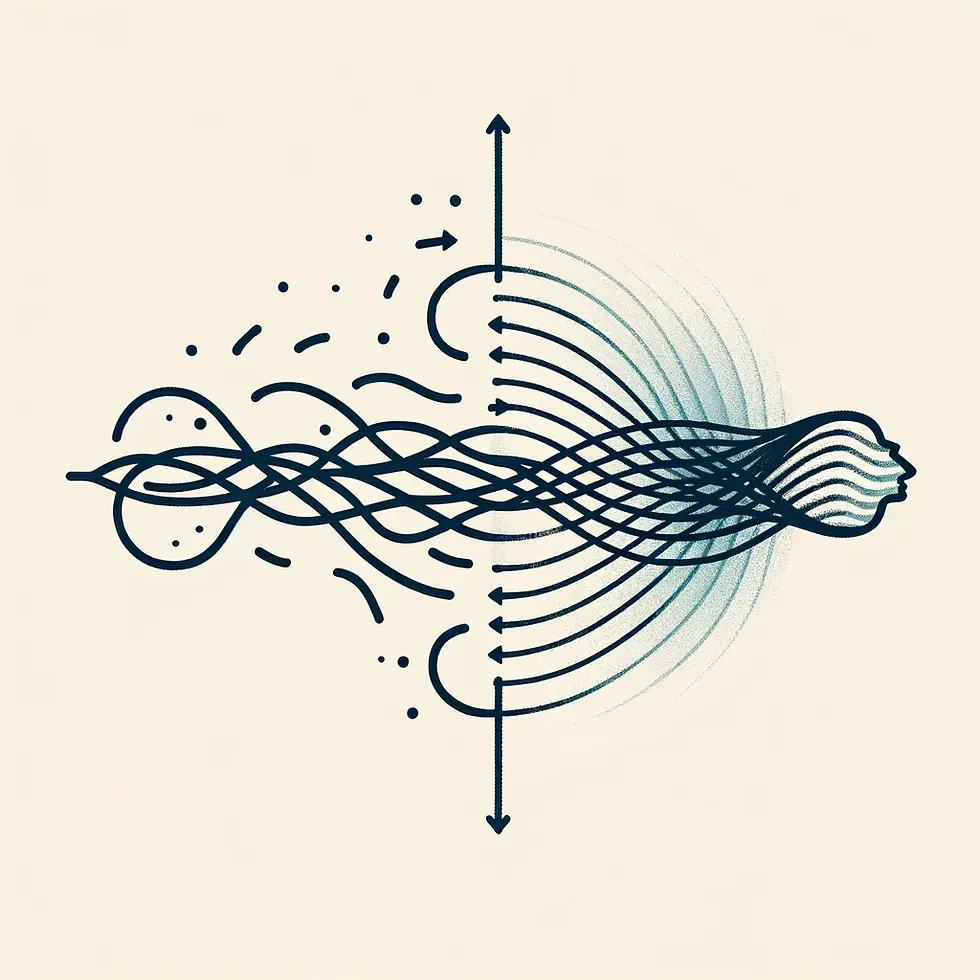Confidence and executive presence are key characteristics of an impactful and influential leader. Executive presence can be defined as the ability to inspire confidence in those around you in such a way that others want to follow you. This leads to better results in business, and leadership. Yet, many high-performing professionals find themselves struggling with self-doubt and insecurity, which can undermine their ability to lead effectively. Despite a track record of success under their belt, the pressure to meet expectations can lead to a disconnection between their capabilities and how they perceive themselves, ultimately lowering the way they present themselves to others.

Leaders may experience:
Imposter Syndrome: The feeling of being a fraud despite external achievements, often leading to anxiety and burnout.
Physical Manifestations: Chronic tension, poor posture, and ineffective body language that diminish their presence in meetings and public speaking engagements.
Communication Barriers: Difficulty in articulating ideas confidently, which can result in missed opportunities for influence and connection.
These challenges can significantly impact a leader's effectiveness, hindering their ability to inspire teams and drive results. In fact, 89% of leaders feel that executive presence helps you get ahead, and 78% think a weak presence holds you back. Understanding how to cultivate personal confidence and enhance executive presence is essential for any leader seeking to thrive in their role. This article is going to cover how our level of discomfort and tension in the body via physical sensations and our postures (which reflect our beliefs and feelings) contribute to low self-confidence. We will als look at how to build the habits required to improve executive presence and specific somatic practices which can help.
How The Body Connects to Executive Presence
Firstly, it’s important that we define a term called Holding Patterns which refers to habitual physical responses and postures that arise from emotional experiences and stress which has been experienced in the past and accumulated over time. In short, our body remembers and subsequently affects how we think, feel, behave and communicate. These patterns often manifest as muscle tension, restricted movement, and altered posture. Here’s how they relate to emotions, personality, and limiting beliefs:
Emotions and Trauma: Holding patterns frequently develop as protective mechanisms in response to emotional pain or trauma. For instance, someone who has experienced significant stress may adopt a defensive posture, such as hunched shoulders, to shield themselves from perceived threats. Chronic tension in the body often mirrors emotional states, making it crucial to recognize this mind-body connection.
Fear and Anxiety: Chronic fear can result in muscle tension, particularly in the chest and shoulders, limiting breath and contributing to feelings of overwhelm.
Sadness: Individuals may exhibit a slumped posture, reflecting emotional heaviness or despair.
Personality: Personality traits can influence how holding patterns manifest. For example, a perfectionist may hold tension in the jaw or shoulders, striving for control, while someone who struggles with asserting themselves may adopt a constricted posture.
Perfectionism: Rigid postures and excessive muscle tension.
People-Pleasing: A constricted throat or a lack of assertive posture, indicating difficulty expressing one’s needs.
Limiting Beliefs: limiting beliefs shape self-perception and influence behavior. They often lead to holding patterns that reinforce negative self-images. For example, someone who believes they are unworthy may adopt a defeated posture, communicating a lack of confidence to others.
Common limiting beliefs include thoughts like, “I am not good enough,” or “Success is for other people, not for me”.

Key Components of Personal Confidence & Executive Presence
Personal confidence and leadership presence are essential traits for effective leadership. They involve not only how one communicates and behaves but also how one embodies their self-assurance. Here are key components of building these qualities:
Self-Awareness: Understanding one’s emotions and how they manifest physically is crucial for developing confidence. By recognizing holding patterns, individuals can start to release physical tension that undermines their confidence. A valuable tool in this process is the Focus Energy Balance Indicator (FEBI) developed by Ginny Whitelaw. The FEBI test assesses four key aspects of personal energy: Focus, Energy, Balance, and Influence. By measuring these dimensions, leaders can gain insights into their energy dynamics and how they impact their executive presence. Understanding their FEBI results helps leaders identify areas for improvement and develop strategies to align their energy with their goals, ultimately enhancing their leadership effectiveness. This is the main psychometric I use in my coaching practice.
Authenticity: Executive presence is grounded in authenticity. Leaders who embrace their true selves resonate more effectively with their teams. By addressing holding patterns and limiting beliefs, individuals can present themselves more genuinely, fostering trust and connection.
Effective Communication: Confidence is often reflected in body language. Leaders who stand tall, maintain eye contact, and use open gestures convey authority and presence. Somatic practices can help individuals become aware of their physical expressions and improve their communication skills.
Emotional Regulation: Effective leaders manage their emotional responses, particularly in high-pressure situations. Somatic practices, such as breathwork and mindfulness, enhance emotional regulation, enabling leaders to respond thoughtfully rather than react impulsively .
Continuous Learning and Growth: Building confidence is an ongoing process. Seeking feedback, engaging in professional development, and embracing new experiences can bolster self-esteem and executive presence.
Enhancing Leadership Skills Though Somatic Practices
Somatic practices focus on the mind-body connection, utilizing bodily awareness and movement to address emotional and psychological issues. Somatic leadership coaching is an approach that cultivates leadership abilities and effectiveness by integrating insights from both the body and the mind. It acknowledges that true leadership goes beyond intellectual knowledge and technical skills. Instead, it requires the capacity to physically embody leadership qualities and express them in a balanced and genuine way.
Here’s how somatics can help improve personal confidence and address holding patterns:
Body Awareness: Somatic practices cultivate heightened awareness of bodily sensations. By tuning into areas of tension, individuals can recognize their holding patterns and the emotional triggers behind them.
Releasing Tension: Techniques such as breathwork, gentle movement, and mindfulness help relieve chronic muscle tension. This release can lead to improved mobility, reduced pain, and a greater sense of ease in the body, enhancing overall confidence .
Reframing Limiting Beliefs: Somatic practices often integrate cognitive elements, allowing individuals to explore and challenge limiting beliefs. As physical tension dissipates, it becomes easier to shift negative thought patterns and embrace empowering beliefs.
Fostering Emotional Regulation: Engaging in somatic practices helps individuals regulate their emotional responses. Recognizing physical sensations associated with stress enables individuals to implement strategies to calm their nervous systems, facilitating a balanced emotional state
Enhancing Resilience: As individuals become more attuned to their bodies and emotions, they develop greater resilience. Somatic practices cultivate a sense of empowerment, enabling individuals to navigate challenges with adaptability and confidence.
Promoting Authenticity: Somatics encourages individuals to embrace their true selves. By releasing holding patterns and challenging limiting beliefs, individuals can express themselves authentically, leading to healthier relationships and increased personal fulfillment.
Concluding Thoughts

Understanding holding patterns in relation to emotions, personality, and limiting beliefs offers valuable insights into the challenges many high performers face in building personal confidence and executive presence. By utilizing somatic practices, individuals can address these patterns at their root, fostering personal growth and success. Embracing the mind-body connection allows for a more holistic approach to healing and self-improvement, empowering individuals to break free from the constraints of their past and step into their full potential as confident leaders.
How I Can Help You?
With a rich background and expertise in martial arts, Zen, meditation, leadership coaching, and somatics, I am uniquely positioned to empower high-performing individuals to cultivate their executive presence and personal confidence. My multifaceted background not only enriches my coaching practice but also provides clients with a holistic approach to overcoming their challenges.
Martial Arts
My journey in martial arts has instilled in me a deep understanding of discipline, focus, and resilience. These elements are crucial in today’s fast-paced business environment, where leaders must navigate high-stakes situations with composure. Through martial arts, I teach clients to harness their physical presence and project confidence, enabling them to command attention and respect in any setting. The practice then becomes unconscious and they learn to stand in their power.
Zen and Meditation
Grounded in Zen principles, I emphasize focus, discipline and body awareness as foundational components of effective leadership. By integrating Zen practices into my coaching, I help clients develop the ability to remain present, manage stress, and make thoughtful decisions even under pressure. This practice fosters emotional regulation and enhances clarity, allowing leaders to respond with intention rather than react impulsively.
Leadership Development
My extensive experience in leadership development equips me with the tools to tailor strategies that address the unique challenges faced by executives. I understand the dynamics and the nuances of team interactions. This insight allows me to guide leaders in navigating complex relationships and fostering a collaborative environment, ultimately driving team success.
Somatics
Utilizing somatic practices, I facilitate a profound connection between the mind and body. By helping clients become aware of their bodily sensations and holding patterns, I empower them to release tension and limiting beliefs that hinder their growth. This somatic approach enables individuals to embody their confidence authentically, resulting in improved communication and stronger connections with their teams.
Are you looking to increase your executive presence and get better results? Book a discovery call with me today!
.png)
Comments